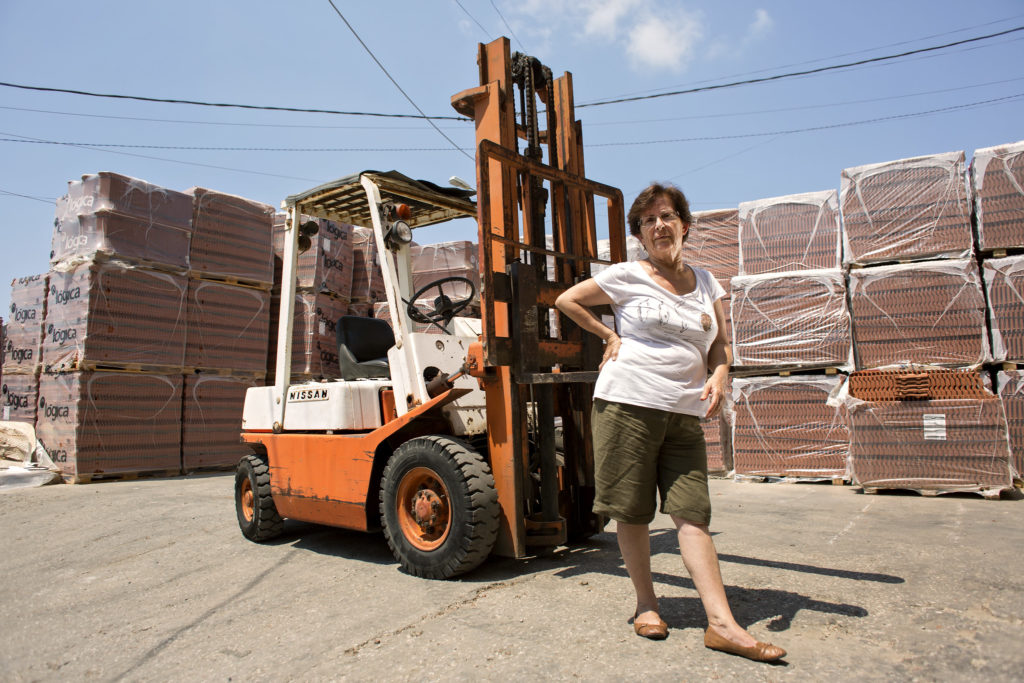Stephanie Stephens grew up near Springfield, Massachusetts. She joined the Army at 17 and served for three years, including two combat deployments to the Middle East. After returning home, she went to community college to become a mechanic, but was unable to find steady work, resulting in a period of homelessness.
Then she met Lisa Clauson.

Clauson, of the New England Regional Council of Carpenters, told Stephens about opportunities for women in the construction industry through the carpenters’ apprenticeship program. Stephens applied, was quickly accepted and immediately started working.
Her construction job, with living wages and strong benefits, has enabled her to stabilize her finances, buy a car, get a better apartment and start building a new life for herself. Now she’s planning to buy a house.
“I love it,” Stephens at a recent Diversity in Construction Summit at Smith College, where stakeholders from across Massachusetts shared their experiences and strategies for hiring more women and people of color into the construction industry. “I’ve got a great career out of it.”
In the half-century since Congress prohibited employment discrimination and President Lyndon Johnson signed executive orders requiring government contractors to hire more people from underrepresented groups, women have come a long way in breaking into many traditionally-male fields, but the construction industry has lagged.
Women are 47 percent of the total U.S. labor force, but only 3 percent of construction workers nationally, and only 2 percent in central and western Massachusetts. Many contractors in that region employ all-white, all-male work crews, or crews with far fewer women and people of color than are reflected in local communities.
Construction work offers high-paying, flexible job opportunities that don’t require postsecondary education. The median annual income for construction workers in Massachusetts is $43,610, and higher when working union and with strong benefits. But there have been few on-ramps into construction, especially for women.
Until now.
A leader in working to diversify the construction industry is the Policy Group on Tradeswomen’s Issues (PGTI), a regional collaboration of researchers, government agencies, unions, community-based organizations, developers and contractors committed to increasing both the supply of qualified tradeswomen and the demand for women on the job.
To increase supply, the Northeast Center for Tradeswomen’s Equity has developed the Build A Life That Works campaign to encourage women to enter the trades through highway billboards and monthly information sessions for women considering the building trades.
The New England Regional Council of Carpenters has a group, Sisters in the Brotherhood, that sponsors a Carpenters Apprenticeship Program and through MA Girls in Trades they connect with young women in vocational and technical schools to encourage them to enter the construction trades.
Clauson, their central and western Massachusetts organizer, has worked hard to help women like Stephens join the building trades. As a result of these efforts, women’s participation has risen significantly from 173 women apprentices in Massachusetts in 2012 to 651 apprentices today, about half of whom are women of color. Overall, 28 percent of apprentices are people of color and 8.6 percent are women.
Clauson has also worked to increase demand for female construction workers through a campaign that encourages colleges, universities and other institutions in our region to adopt goals for construction projects on their campuses. In the fall of 2017, Clauson coordinated with Smith College faculty and students to spur the college to adopt hiring goals for the construction of the new Neilson library on campus.
The Program for the Study of Women and Gender and the Engineering Program at Smith co-sponsored a forum with female construction workers and building trades owners who spoke about how entering the construction trades provided them with meaningful work that enabled them to support themselves and their families.
At this event in 2017, Smith’s director of facilities Roger Mosier pledged to adopt hiring goals of 16 percent people of color and 7 percent women (in work hours) for the Neilson library project. Smith has achieved these goals: 24.4 percent people of color and 7.3 percent women.
That achievement garnered enthusiastic applause at the Oct. 8 Summit on Diversity in Construction at Smith College, where the Massachusetts Lt. Gov. Karyn Polito recognized organizations who have adopted hiring goals. In addition to Smith, Polito recognized Mount Holyoke College, University of Massachusetts Building Authority, YWCA Central Massachusetts, the Massachusetts DOT and the cities of Worcester and Springfield. She also honored the Mass Gaming Commission, which has required contractors building the new casinos in Massachusetts to hire women and people of color.
As a result, MGM built their new $750 million casino in Springfield with over 22 percent people of color work hours and over 7 percent women work hours.
“Change in the construction industry is long overdue,” says Clauson. “Women have been doing this work, women can do this work, more need to be encouraged to consider higher paid careers like construction, but the problem is not with interest. The problem is with an industry and a culture that has been reluctant to change. Institutions that do construction can play an important role opening up opportunities by requiring their contractors bring in diverse work crews. It’s time for change.”
This piece originally appeared in the Daily Hampshire Gazette. Republished with author permission.





